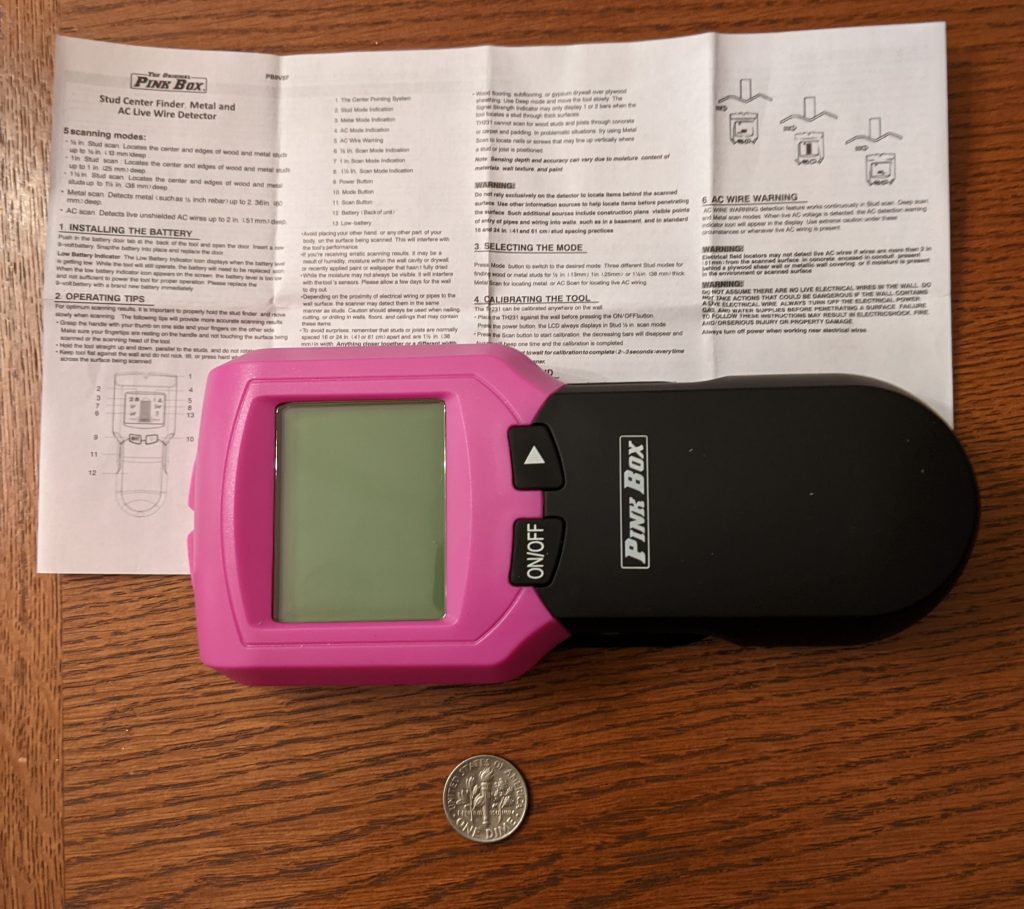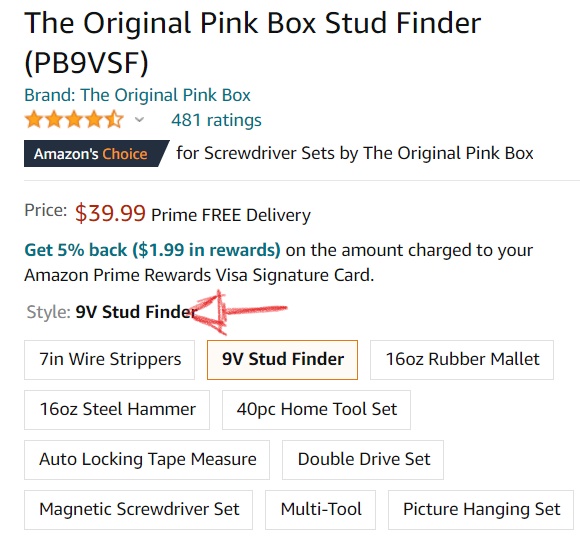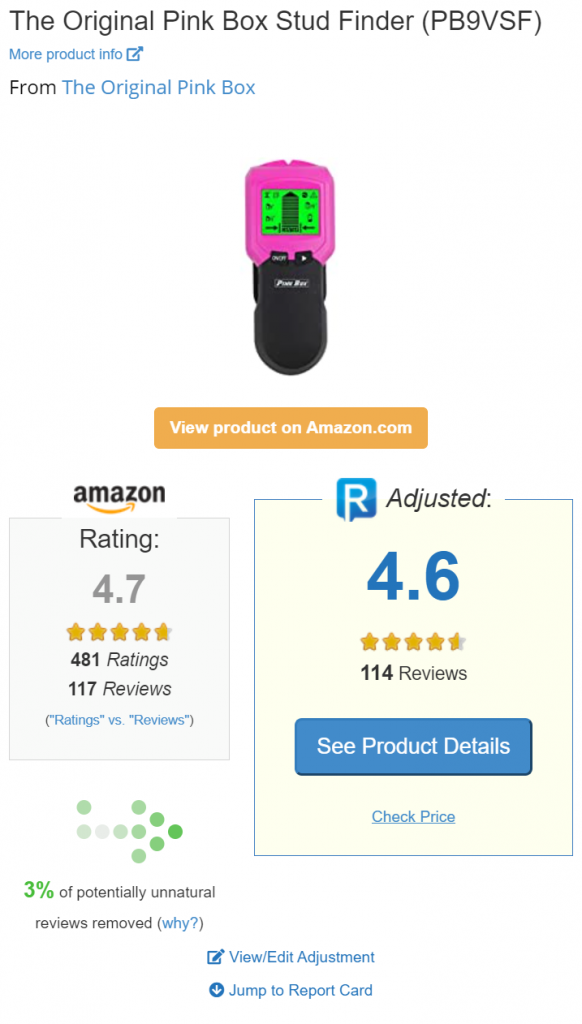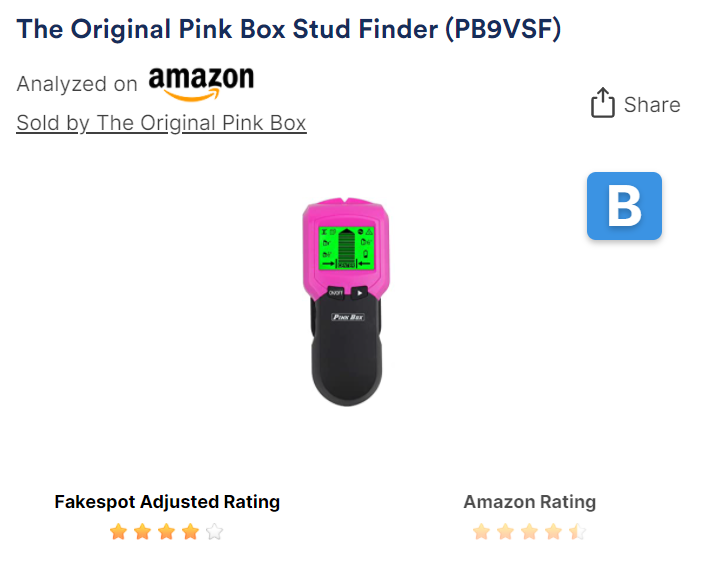I recently bought a stud finder from Amazon based on it having the “Amazon’s Choice” tag – a reliable shortcut, right? Then the product arrived.
What struck me as initially weird about this product was that the instructions were all in an extremely small font – I couldn’t read them without straining my eyes, and there was no website link.

So, I searched online for the model number, TH220, but instead found references to another product by “FOLAI” with some poorly made YouTube reviews. That product looked exactly the same, except for the color and labeling.
I went back to the Amazon product page for “The Original Pink Box” stud finder and scanned the reviews (emphasis on “Original” is mine; you’ll understand the irony shortly). It was apparent that the majority of the reviews were for other unrelated products like a tape measure. Then, I noticed something strange in the “Style” selector tool for the stud finder. It appears that a hack was applied to have multiple, unrelated products all linked to this one by using the “style” feature.

I’m not sure this is a case of “review hijacking,” since the reviews were presumably for other products by the same company.
I contacted Amazon support to ask what was going on, but support was initially useless: they replied to my inquiry with a description of the product. After further discussion, they assured me about the quality of their inventory and offered that I could return it for a refund, and then gave me a $5 credit.
The instructions themselves – although too small to read comfortably – had reasonably clear English, suggesting a possible American manufacturer. So, I searched for some of the text strings from the manual and found it copied to more clones of this product:
- “Shibeier” stud finder on Sears’ website
- “INTEY” stud finder
- “FOLAI”
- “Baqsoo” (also found on Amazon through a search of the manual that revealed some Q&A was using product page keyword stuffing from the manual)
- “TAVOOL”
- “ZBYZF”
- “VIGOELAN”
- (SainSmart ToolPac SMA19) – finally – what appears to be the original source of the instruction manual: the same instructions, fewer typos (an artifact of OCR?), and a different model number cut & pasted.
So, which is the real manufacturer? And which are knockoffs? And when can you trust “Amazon’s Choice?” What does “choice” imply, anyway? It’d seem to imply some editorial review by Amazon, but since Amazon won’t say, it is reasonable to speculate that it is actually an algorithmic semi-sponsored result, in the sense that Amazon strikes some balance between expected profit margin and rating.
What’s a consumer to do? I checked ReviewMeta and Fakespot for reviews, but both had equally failed the test:

Above is ReviewMeta. Below is Fakespot.

So what exactly is going on? My guess is that “manufacturers” are being invented at an increasing pace in order to flood the search results with listings of the same product, and Amazon is struggling to keep up with the pace.
It seems we’re seeing a rise in counterfeits on Amazon. Increasingly, it’s smart to revert back to name brands, ignore online reviews, and shop from retailers who do the vetting of products that they sell.
So, did the stud finder work? I’m not sure whether I can trust it to detect wires in the wall, since the results seem strange and filled with a lot of false positives. As a non-expert, I need a name brand for comparison to see if the readings I’m getting are reliable.
One reply on “Beware “Amazon’s Choice””
I often review newly filed trademarks at https://uspto.report/TM/
Amazon’s brand registry now requires trademarks to be filed [ https://www.gerbenlaw.com/blog/amazon-sellers-must-register-trademarks-for-amazon-brand-registry/ ] and this has resulted in a huge surge of new Chinese companies registering gibberish sounding trademarks (INTEY / FOLAI / Baqsoo all have hits).